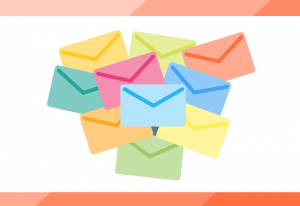September 23, 2016

Email marketing continues to reign as the top channel for producing ROI. In the Email Marketing Industry Census 2016 report by Econsultancy and Adestra, 73% of marketers agree that email produces “good” to “excellent” ROI. However, like all marketing channels, email is evolving and marketers are focusing on key areas to increase consumer engagement. The research revealed that 34% of email marketers say automated campaigns are one of their top three areas of focus in 2016.
The top five key focus areas include:
- Automated campaigns – 34%
- Measurement & analytics – 28%
- Strategy & campaign planning – 27%
- Segmentation – 24%
- Personalization – 22%

Survey respondents also plan use more behavioral triggers in their email campaigns. 66% of marketers cited implementing more creative uses of behavioral triggers as one of their top goals in how they plan to innovate.

As consumers become more sophisticated and demanding of brands today, email marketers must follow suit to provide consumers with personalized emails at the time a consumer will be most receptive. However, According to a survey by IBM and eConsultancy, only 21% of consumers consider the email communications they receive to be relevant.
Email marketing automation and triggered emails are playing an increasingly pivotal role in the success (and ROI-producing potential) of today’s email strategies. “Trigger-based email marketing campaigns can generate 4x more revenue and 18x greater profits,” according to Forrester Research. And according to the Direct Marketing Association, “Trigger-based email campaigns can be responsible for 20% or more of email marketing revenue.”
Examples of Triggered Messages
While automating everything isn’t possible, using triggered emails at opportune moments based on a customer or prospect’s behavior will enhance experiences and increase engagement. So if you are ready to put triggered emails to work for you, here are some great examples to better serve your customers.

Welcome New Customers
Every business should have a welcome email to new subscribers. A welcome email should launch as soon as a new subscriber signs up to receive your updates. However, many marketers stop here and send just one initial welcome email. Consider deploying a series of welcome emails, designed to establish a relationship with newcomers and introduce them to your products and services.
This doesn’t mean send series of emails that bombard new subscribers with salesey messages describing all your latest and greatest products and services. Instead, use this as an opportunity to get to know newcomers to your brand and provide valuable content that may be of interest to them. For example, send a second welcome email reminding them of discounts, offers, or coupons you may have offered in your initial email. Send another email inviting them to fill out a profile so you can provide personalized recommendations on their interests. A third email may thank them for filling out their profile with an offer for a discount based on products in which they expressed interest.
Welcome emails can play a huge role in establishing brand loyalty early on and keep new customers engaged with your brand.
Shopping Cart Abandonment Reminders
Abandoned shopping carts are nothing new for those in ecommerce. Many consumers use a shopping cart simply to store items until they are ready to purchase. Research by Bronto Software included in-depth analysis of a consumer’s use of shopping carts and their expectations. A key finding revealed that 73% of online shoppers use the shopping cart to store items to buy later. According to the study, “This shows that for most online shoppers, some level of purchase intent remains when items are left in the cart. Eighteen percent of online shoppers plan to revisit items left in shopping cart every time they shop, revealing that for many, this is fundamental part of shopping online.”
Shopping cart reminders can be key to a final conversion, but how consumers perceive these reminders vary by age. Overall, 42% of online shoppers find cart reminders to be helpful. More than half of online shoppers aged 18-29 found cart reminders to be helpful, while seniors (those aged 65+) tended to view them as intrusive (32%) or annoying (37%).

The Bronto Software survey also found that nearly half of all online shoppers who expect to receive a cart reminder (48%) do not expect the email to contain a discount, incentive or free shipping offer. Of the remainder, more shoppers answered that they expect a reminder email to contain discounts and coupons (37%) rather than free shipping offers (15%).
Also interesting to note is that while 74% of online shoppers expect the message to be received within 24 hours after items have been left in the cart, the largest percentage (35%) expect the messages to hit their inboxes between 12-24 hours.
Transaction Emails
After completing a purchase, your customer expects to receive a confirmation email of some sort. Consumers welcome these emails because they know these are confirmation of their recent activity versus a sales message. Transactional emails such as receipts, invoices, notifications, and reports are opened at up to 8x the rate as compared to promotional emails.
Marketers often overlook this opportunity as an additional touchpoint to increase engagement with your brand. A confirmation email doesn’t have to be boring, nor does it have to be devoid of any type of marketing promotion. Amazon, among other retailers, does a great job of adding product cross-sell recommendations. For example, if a customer just bought a new dress, offer options for matching accessories. Consumers also respond favorably to product recommendations based on additional items other customers have frequently purchased with the original item.
Triggered Emails Deliver Results
Consumers respond and engage more often when they receive a triggered email based on their behavior. According to research by Yesmail, on average, triggered messages generated double the open rate of BAU (Business as Usual) campaigns, twice their click-to-open rate, and more than 4x their unique click rate. While triggered campaigns comprise only 2% of all email volume, they generate 10% of email-driven revenue and 10% of email-driven orders.
Email marketers have plenty of ways to integrate triggered email campaigns into their strategies, yet only the basic triggers are generally used.

Email marketing remains a great channel for delivering ROI. By implementing variety of innovative triggered email components, marketers can further boost ROI, capitalize on cross-sell opportunities, and increases brand engagement. Providing relevant and timely content to customers and prospects will deliver exceptional results and a lasting relationship with your customers.
Digital & Social Articles on Business 2 Community
(86)





